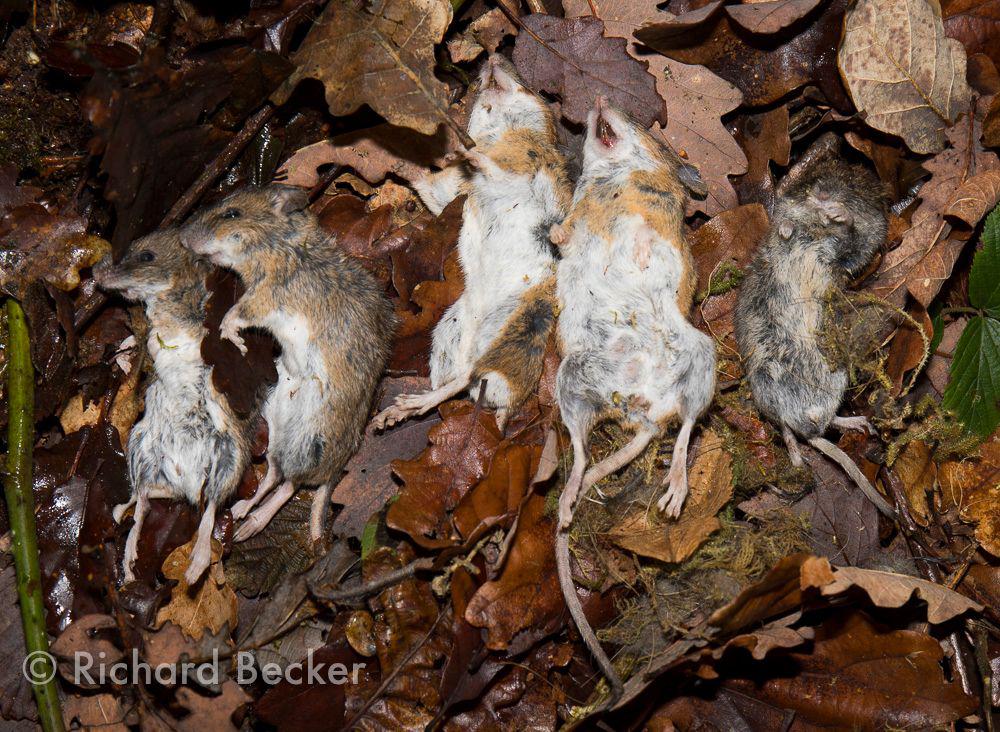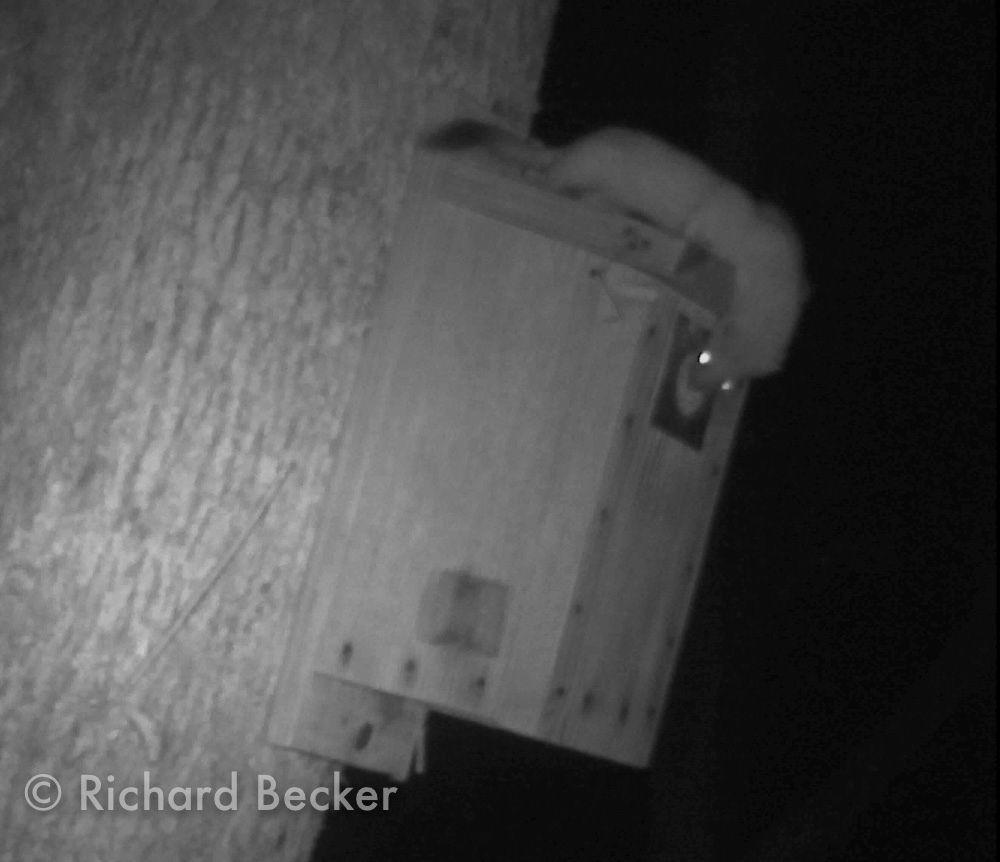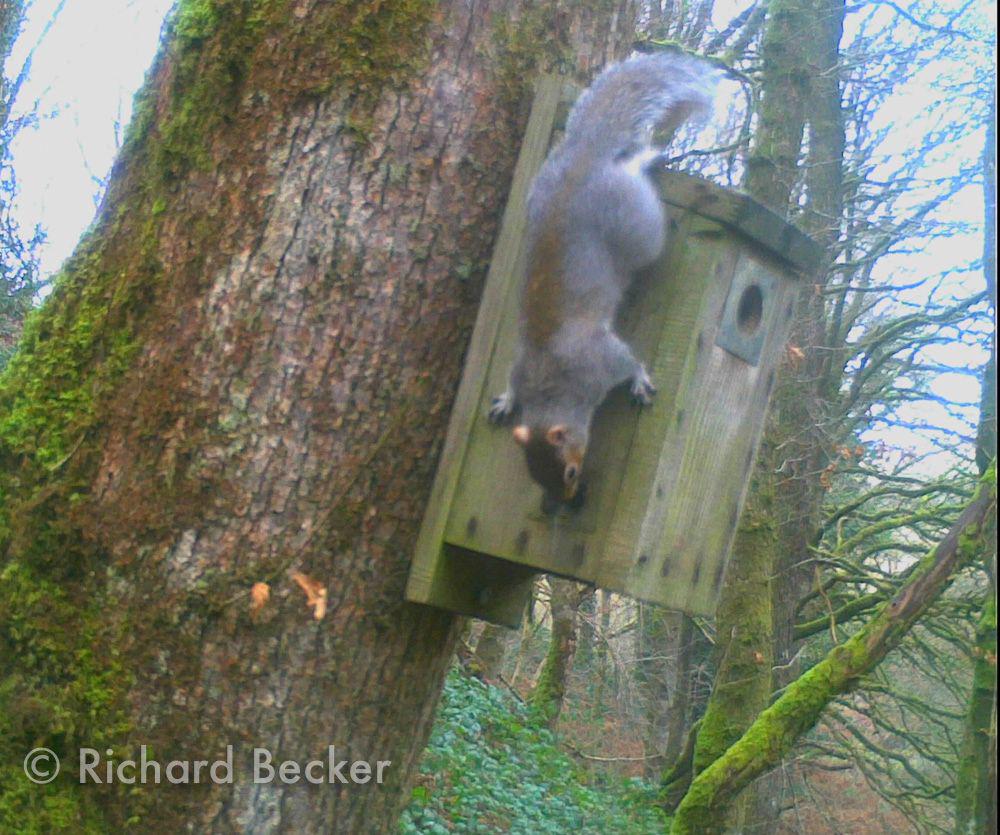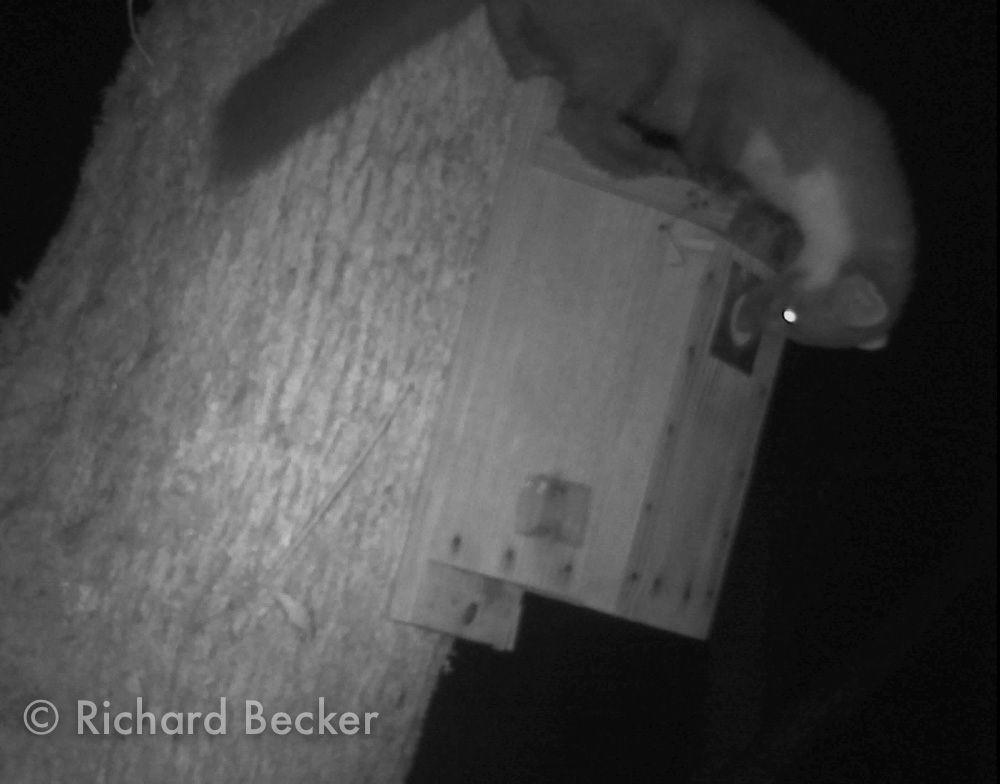18 Jan 2021
A couple of weeks ago I cleaned out the bird nest boxes on the farm in preparation for the coming nesting season. Overall the occupancy last year was higher than for several of the preceding years with most of the boxes containing an old nest to be removed.
One large box was full to the top with acorns, a reflection on the abundant crop last year, each acorn having been individually carried up the tree and into the box by a wood mouse (Apodemus sylvaticus) or a yellow-necked mouse (Apodemus flavicollis) as a store for future consumption. Another box however contained a food store of a different kind.

Opening the lid I saw a dead mouse, it's not unusual to find corpses in nest boxes, usually birds, either nestlings that failed to emerge, or adults, and the ocassional mouse. They have to die somewhere, and not every one gets predated. Lifting it out I realised that there were several others, and as they were of 3 rodent species something had clearly placed them there deliberately. In total there were 2 wood mice, 2 yellow-necks, and a field vole (Microtus agrestis). I thought that most likely they were the cache of a mustelid, of the likely candidates a polecat (Mustela putorius) would seem to large to get in the 38mm diameter entrance hole, and I wasn't sure a stoat (Mustela erminea) could manage either. A weasel (Mustela nivalis) seemed the most likely so I decided to set up a trail camera to see if anything visited.
Over the space of 24 hours the box was visited by a stoat, a squirrel (Sciurus carolinensis) who spent ages trying to get in, and remarkably (see below) a pine marten (Martes martes). however it was the stoat who could enter the box, a very tight squeeze as witnessed in a video taken by the trail camera a couple of days later. The trail camera images are of poor quality, the night ones especially, but they do the job and the infra-red light doesn't spook wildlife.



Last year this nestbox was used by a pair of great tits (Parus major), although for several years it has been the home of a pair of nuthatches (Sitta europaea), and it is nuthatches again who seem to have staked out the box for the coming season. They will need to reduce the entrance hole size though to avoid the attentions of the stoat.
Ten years ago pine martens were an enigma in Wales, occasional roadkill corpses showed they did exist, but they were so rare that nobody knew where they were living. It was thought that they bred extremely rarely, simply because dispersing young almost never saw another of their species again so thinly were they distributed. Then in the last few years a progamme of translocating individuals from Scotland into the wooded valleys of this part of Wales has led to regular breeding and what will hopefully turn into a viable population.